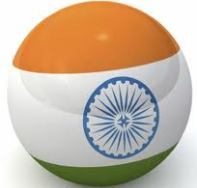 Herbal Care Product for Leucoderma Launched by DRDO
Herbal Care Product for Leucoderma Launched by DRDO
Leucoderma or Vitiligo is a skin disease characterized by white spots and patches on the skin caused by fungus. The world wide incidence of leucoderma has been reported 1-2%. In India, its incidence is around 4-5% in some parts of Rajasthan and Gujarat it is very high more than 5-8%. This skin disorder is considered as social stigma in our country and people confuse it with leprosy. The affected individuals are always remain in constant depression with the feeling of being socially outcast. DRDO has developed a herbal product called Lukoskin for this disease. This herbal product would be a new hope and boon to the vitiligo affected person.
Children in Sex Trade
A comprehensive study on ‘Girls and Women in Prostitution in India’ conducted in 2004 had estimated that there were about 2.8 million prostitutes in the country of which 36% are children. An infamous example is the Bachara tribe, a community from the western part of Madhya Pradesh.They are known for the tradition of child prostitution, with families making their first daughters, as children, into prostitutes to support the family. The tradition is centuries old and is still practiced today.
Supercritical technology for termal power plants to save fuel
A capacity of about 4000 MW is likely to be added in the 11th Plan through super-critical units of which about 1980 MW has already been commissioned so far. In the 12th Plan, about 50% to 60% coal fired capacity addition is expected to be from super-critical units. They can lead to about 5% savings in fuel consumption as compared to typical 500 MW sub critical units. However, he added that the super-critical technology being a new technology may involve higher capital cost for initial units and a part of the higher capital cost may get offset by savings in fuel. He further said that with new manufacturing entities being set up in the country, there may be reduction in capital cost in the long run.
National Minorities Development and Finance Corporation
National Minorities Development and Finance Corporation (NMDFC) extends loans to persons belonging to minority communities living below double the poverty line for undertaking self employment and income generating activities. At present families having annual income less than Rs.55,000 in urban areas and less than Rs.40,000 in rural areas are categorized as under below double the poverty line.
India’s External Debt Remains within Manageable Limits Despite Increase in Absolute Terms
India’s external debt has remained within manageable limits despite the increase in absolute terms and the changing composition. This is indicated by external debt to GDP ratio of 17.3 per cent and debt service ratio of 4.2 per cent in 2010-11. The external debt to GDP ratio was 38.7 per cent in 1991-92 and 22.5 per cent in 2000-01. The debt service ratio similarly was 30.2 per cent in 1991-92 and 16.6 per cent in 2000-01. The steady improvement in India’s external indebtedness position has been due to prudent external debt management policy followed by the Government of India, the main planks of which are monitoring long and short-term debt, raising sovereign loans on concessional terms with longer maturities and regulating external commercial borrowings.
|
Table: India’s Key External Debt Indicators
| |||||||
|
(Per cent)
| |||||||
|
At end March
|
External Debt
(US$ billion)
|
External Debt to GDP
|
Debt Service Ratio
|
FER to Total Debt
|
Concessional Debt to Total Debt
|
Short-Term to FER
|
Short- Term to Total Debt
|
|
1
|
2
|
3
|
4
|
5
|
6
|
7
|
8
|
|
2008-09
|
224.5
|
20.5
|
4.4
|
112.1
|
18.7
|
17.2
|
19.3
|
|
2009-10 PR
|
261
|
18
|
5.5
|
106.9
|
16.8
|
18.8
|
20
|
|
2010-11QE
|
305.9
|
17.3
|
4.2
|
99.6
|
15.6
|
21.3
|
21.2
|
|
PR: Partially Revised; QE: Quick Estimates. FER - Foreign Exchange Reserves
| |||||||
The Global Development Finance, 2011 of the World Bank, which contains external debt numbers for 2009, shows that India’s position was fifth, in terms of absolute debt stock amongst the top twenty developing debtor countries. In terms of ratio of external debt to Gross National Income, India’s position however was the fifth lowest.
What is Debt service ratio
Debt service ratio is the ratio of debt service payments (principal + interest) of a country to that country’s export earnings. A country's international finances are healthier when this ratio is low. The ratio is between 0 and 20% for most countries.





0 comments: